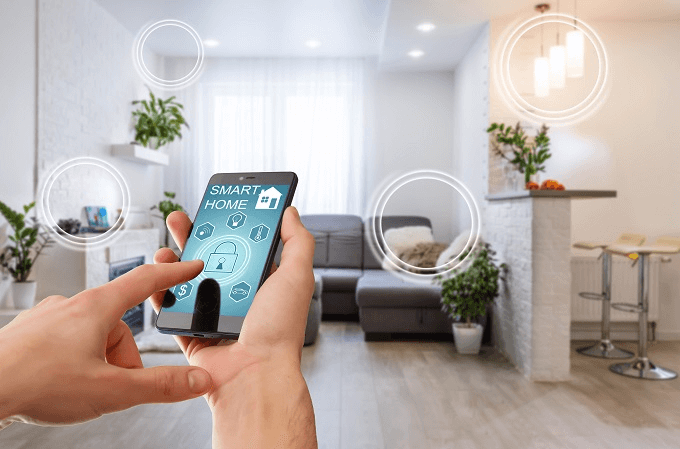In today's technologically advanced world, the concept of connected multi-room audio is becoming increasingly popular among both homeowners and businesses. This innovative technology allows for seamless audio streaming across multiple rooms, providing an immersive auditory experience. But what exactly is connected multi-room audio and how does it work? Let's delve deeper into this fascinating subject.

What is Connected Multi Room Audio?
At its core, connected multi-room audio involves a system of speakers and audio devices that are interconnected, enabling them to play synchronized music throughout various rooms in a home or business establishment. This interconnected setup allows users to control what plays in each room or have the same audio track playing throughout the entire space. With the rise of smart home technology, integrating such systems has never been easier.
How Does Connected Multi Room Audio Work?
The magic behind this system lies in its ability to connect to your home's Wi-Fi network. Once connected, you can control the audio system using a smartphone app, voice commands, or even a central control panel. Each speaker or audio device in the system communicates with the others, ensuring a seamless audio experience.
For example, you might have a speaker in the kitchen, another in the living room, and a third in the bedroom. Through the app, you could play different music in each room or synchronize them to play the same track. This flexibility is particularly beneficial for businesses, where different areas might require varied audio settings.
Benefits for Homeowners
Homeowners can greatly benefit from a connected multi-room audio system. Imagine hosting a party where the same music plays as guests move from the living room to the backyard, creating a consistent atmosphere. Or, consider the convenience of listening to a podcast in the kitchen, then continuing it seamlessly in the bedroom.
Moreover, with the integration of smart home technology, homeowners can easily incorporate voice assistants like Amazon Alexa or Google Assistant to control the audio with simple voice commands. This hands-free control enhances convenience and adds a touch of modernity to any home.
Advantages for Businesses
For businesses, especially those in the hospitality sector, a connected multi-room audio system can significantly enhance customer experience. Restaurants can create different ambiances in separate dining areas, while retail stores can tailor music to different sections of the shop, aligning with their branding strategy.
Additionally, offices can benefit from such systems by playing calming music in break rooms or motivational tracks in common areas. The ability to control audio levels and content remotely ensures that businesses can maintain an optimal environment at all times.
Setting Up Your System
When setting up a connected multi-room audio system, it's crucial to select the right devices that are compatible with your existing network and meet your specific needs. There are numerous products available in the market, ranging from budget-friendly options to high-end systems.
For those new to smart home technology, resources like the TechRadar's guide on setting up a smart home can be invaluable. They provide detailed instructions on selecting the right equipment and ensuring a smooth installation process.
Additionally, understanding the importance of firmware updates is vital for maintaining the system's efficiency and security. Learn more about firmware updates in smart homes to keep your system running optimally.
The Future of Connected Audio
As technology continues to evolve, the future of connected multi-room audio looks incredibly promising. With advancements in AI and machine learning, these systems are expected to become even more intuitive, offering personalized audio experiences based on user preferences.
Furthermore, the integration of smart home ecosystems means that users can expect more seamless interactions between their audio systems and other smart devices. This interconnectedness will not only enhance convenience but also improve energy efficiency and sustainability in homes and businesses.
For those interested in the broader implications of smart home technology, exploring the future of interconnected homes can provide valuable insights.
Considerations and Challenges
While the benefits of connected multi-room audio are undeniable, there are some considerations to keep in mind. Network stability is crucial, as any interruptions can disrupt the audio experience. Additionally, ensuring that all devices are compatible and properly configured can be a challenge for some users.
It's also essential to consider privacy and security, especially when integrating voice-controlled devices. Regularly updating passwords and monitoring network access can help mitigate potential risks.
For more tips on creating a secure and efficient smart home environment, check out this discussion on smart homes in urban living.

FAQs
What is the primary benefit of a connected multi-room audio system?
The main advantage is the ability to have synchronized audio throughout different rooms, providing a seamless and immersive experience. This is particularly beneficial for hosting events or enhancing the ambiance in various spaces.
Can I integrate my existing speakers into a multi-room audio system?
Yes, many modern multi-room audio systems are designed to be compatible with various speaker brands. However, it's essential to check compatibility before purchasing.
Is it difficult to set up a multi-room audio system?
While the setup process can vary depending on the system, many manufacturers provide detailed instructions and support to assist users. For beginners, resources like Feel Design's beginner's guide can be helpful.

